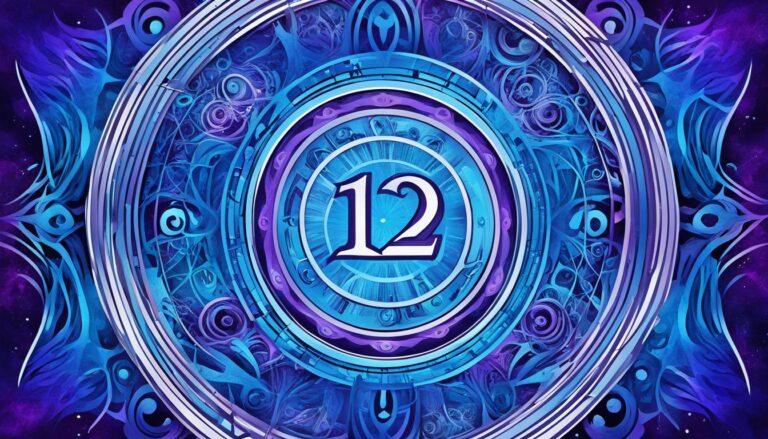What Is the Dead Dream in The Great Gatsby?
Have you ever found yourself chasing a dream that felt just out of reach? That dream that consumes your every thought, driving you to push harder, reach higher, and become someone you never thought you could be? If so, then you can understand the heart-wrenching plight of Jay Gatsby in F. Scott Fitzgerald’s masterpiece, The Great Gatsby.
Gatsby’s aspirations, symbolizing the dead dream, stem from his relentless pursuit of wealth and the love of his life, Daisy Buchanan. He believed that if he could amass enough riches and transform himself into a man of extravagant means, he could win Daisy’s heart and recreate a romanticized past that existed only in his mind.
But alas, Gatsby’s dream was doomed from the start. In a society entrenched with corruption and moral decay, where the pursuit of wealth took precedence over genuine human connection, Gatsby’s vision of love and happiness was ultimately shattered.
Key Takeaways:
- Gatsby’s dead dream symbolizes the futility of pursuing wealth and love in a corrupt society.
- The American Dream, as portrayed in The Great Gatsby, is revealed to be an illusion.
- Gatsby’s desperate pursuit of Daisy exposes the consequences of clinging to an unattainable dream.
- The withering valley of ashes serves as a stark reminder of the empty promises of materialism.
- The demise of Gatsby’s dream highlights the greed and disillusionment prevalent in American society.
The Illusion of the American Dream
In The Great Gatsby, Jay Gatsby’s unattainable dream represents the illusion of the American Dream. Gatsby believes that achieving wealth and social status will lead to the fulfillment of his ultimate goal. He sees Daisy Buchanan as the embodiment of his dream, symbolized by the green light at the end of her dock.
However, Gatsby soon realizes that his dream remains out of reach. Despite his lavish parties and ostentatious displays of wealth, Daisy is ultimately unattainable. This highlights the illusory nature of the American Dream in which material success alone does not guarantee happiness or the fulfillment of one’s desires.
The symbolism of the green light further emphasizes the illusion that Gatsby’s dream represents. The green light represents hope, yearning, and Gatsby’s relentless pursuit of his unattainable dream. However, it also serves as a reminder of the unattainability and ephemeral nature of dreams, as the green light is always just out of reach.
The Great Gatsby delves into deeper themes beyond the illusion of the American Dream. It explores the emptiness and shallowness that lies beneath the superficial facade of wealth and social status. The characters in the novel are driven by materialism and the pursuit of their own selfish desires, ultimately leading to disillusionment and tragedy.
This theme of the illusion of the American Dream resonates with readers as it reflects the reality that success and material wealth do not guarantee happiness or the fulfillment of one’s deepest desires. Instead, it serves as a cautionary tale about the futility and misguided pursuit of empty dreams in a corrupt society.
Gatsby’s Desperate Pursuit of Daisy
Gatsby’s unattainable dream in The Great Gatsby centers around his desperate pursuit of Daisy Buchanan. Jay Gatsby, driven by his aspirations, believes that by recreating their past and showcasing his newfound wealth, he can win Daisy’s heart once again. However, Gatsby’s infatuation with Daisy blinds him to the reality that she is not the idealized figure he imagines her to be. Despite his immense riches and extravagant parties, Gatsby’s dream crumbles when Daisy ultimately chooses to remain with her husband, Tom.
This tragic pursuit of an unattainable dream exemplifies one of the central themes in The Great Gatsby. It highlights the consequences of holding onto a romanticized illusion and the harsh realities that can accompany the pursuit of an unattainable ideal. Gatsby’s unwavering obsession with Daisy serves as a cautionary tale, demonstrating the emptiness and futility of striving for an unattainable dream.
Throughout the novel, Gatsby’s desperate pursuit of Daisy unfolds against the backdrop of the roaring 1920s, a time characterized by excess and materialism. Gatsby’s wealth and lavish lifestyle symbolize the superficiality and corruption of the society in which he exists.

Amidst the towering billboards and industrial wasteland, the withering valley of ashes becomes a haunting reflection of the corrupt American society depicted in the novel. It exposes the hollowness of a society obsessed with material wealth and the lengths to which individuals will go in pursuit of their desires.
As the characters in The Great Gatsby navigate this lifeless landscape, they are confronted with the consequences of their futile pursuit of wealth and the inherent corruption that permeates the American Dream.
The Demise of Gatsby’s Dream
The demise of Jay Gatsby’s unattainable dream is a poignant reflection of the corrupt nature of American society and the futility of the pursuit of wealth. Despite Gatsby’s transformation from a humble farm boy into a wealthy socialite, his dream crumbles when Daisy Buchanan, the woman he idolizes, chooses to remain with her unfaithful husband, Tom.
In the face of relentless efforts to win Daisy’s love, Gatsby’s dream becomes intangible and elusive. He is left clinging to a dead dream that can never be fully realized. This tragic ending serves as a testament to the greed and disillusionment prevalent in the society that The Great Gatsby portrays.
Gatsby’s unattainable dream highlights the emptiness that lies beneath the glamorous facade of wealth and materialism. The novel paints a vivid picture of a society obsessed with surface appearances, where moral decay and corruption thrive behind closed doors. Gatsby’s undying pursuit of a dream that is ultimately unattainable lays bare the shallow values and misguided aspirations of a society that equates success with material possessions.
FAQ
What is the dead dream in The Great Gatsby?
The dead dream in The Great Gatsby refers to Jay Gatsby’s unattainable aspiration to win the love of Daisy Buchanan. Despite his efforts and transformation into a wealthy man, Gatsby’s dream crumbles as he realizes Daisy will never leave her husband, Tom. This dead dream highlights the futile pursuit of wealth, the corrupt nature of American society, and the unattainability of Gatsby’s dream.
What does the dead dream symbolize in The Great Gatsby?
The dead dream symbolizes the illusion of the American Dream. Gatsby believes that achieving wealth and social status will lead to the fulfillment of his ultimate goal, represented by the green light at the end of Daisy’s dock. However, Gatsby’s dream remains out of reach, emphasizing the illusory nature of the American Dream. The novel explores themes of materialism, the corruption of the American Dream, and the emptiness beneath the superficial facade.
How does Gatsby’s pursuit of Daisy contribute to his dead dream?
Gatsby’s dead dream revolves around his desperate pursuit of Daisy. He believes that by reliving their past and proving his worth through wealth, he can win her back. However, Gatsby’s obsession blinds him to Daisy’s true nature, and despite achieving great wealth, his dream is shattered when she chooses to stay with her husband. This tragic pursuit highlights the theme of unattainable dreams and the consequences of holding onto a romanticized illusion.
What does the withering valley of ashes represent in The Great Gatsby?
The withering valley of ashes symbolizes the futile pursuit of wealth and the corrupt nature of American society. It is a desolate area located between the opulent East and West Eggs, representing the failure of the American Dream for those living in poverty like George Wilson. The valley of ashes highlights the contrast between the illusion of success and the harsh realities faced by those left behind in society’s pursuit of materialism and wealth.
How does the demise of Gatsby’s dream reflect the corrupt nature of American society?
The demise of Gatsby’s dream marks the culmination of his futile pursuit of wealth and showcases the corrupt nature of American society. Despite Gatsby’s transformation and efforts to win Daisy, his dream dies when she chooses to stay with her unfaithful husband, Tom. Gatsby is left clinging to a dead dream that he can never fully realize, highlighting the greed and disillusionment prevalent in the society depicted in The Great Gatsby.







